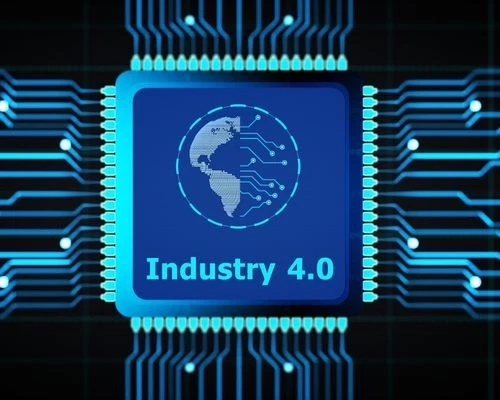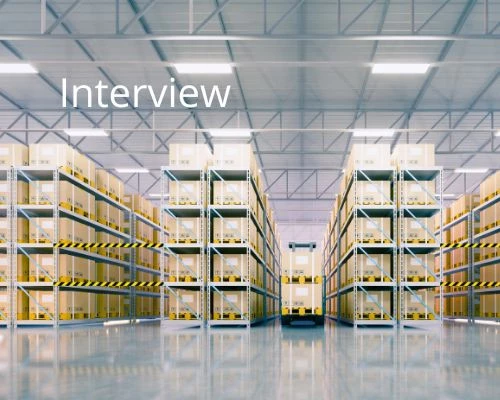What’s Next for IoT in Manufacturing? Interview with Cisco’s Paul Didier
Add bookmark
The Internet of Things – which enables manufacturers to use real time data from connected devices and machines to improve reliability, throughput, quality and safety - has become a common technology in the manufacturing industry. The impact of this technology has only deepened since the Covid-19 pandemic as it enables remote monitoring and operation reducing the number of people required on site. But what’s ahead for 2022 and how can manufacturers get more out of their IoT systems?
Paul Didier is a Solutions Architect Manager for Cisco System’s Industries Product Group (IPG). He is responsible for developing solutions for the Discrete and Process Manufacturing, Transportation and Utilities verticals including Automotive, Oil & Gas, Mining and other sub-verticals.
In this interview, he joins IX Network editor, Diana Davis, to discuss the challenges of IoT in manufacturing, what he sees as the trends in the year ahead, and how to take IoT to the next level.
Diana Davis, IX Network: We've had a turbulent, 18 months in manufacturing. Why do you believe that the pandemic has accelerated IoT investments at manufacturers?
Paul Didier, Cisco: The pandemic didn't slow anything in the manufacturing space. It actually increased it. You can't deny that at the start of the pandemic there were some serious disruptions. A lot of our economy was negatively impacted. But nothing stopped in terms of people needing food, needing bikes, and all kinds of different products. Manufacturers were actually asked to produce more and more.
Additionally, with the pandemic there has been an increase in working from home. People are relying on digital access to many of these industrial environments in order to maintain, to operate and to improve them while minimizing the number of people going into crowded locations.
This required a move to more open, interconnected type of models. Internet technologies are critical so that the data, the devices, and the systems are accessible to people where ever they are.
Diana Davis, IX Network: As they've adopted more IoT devices what are the common challenges that you're seeing in these industrial environments?
Paul Didier, Cisco: Most of the people that build deploy, operate and maintain these operational environments in the factories are not IT, nor networking specialists. They know their automation control systems, they know the products that they build. But as they have come to rely more on the network they require an approach that is more sophisticated and more capable. They require active network management as a foundational capability.
But as they are not IT experts, it's really important that the system gives them information. I just want to know my network's working and if it's not working tell me where is the problem and what can I do about it.
I think many manufacturers have run these digitization projects and look at the information they want to get from the production environment and the systems they need data from. The challenge is that many of the legacy or existing production environments don't have the required connectivity in a solid secure manner.
Diana Davis, IX Network: So how do you get to that next step?
Paul Didier, Cisco: It takes time. A manufacturing plant is not the kind of environment where often people go in and rip and replace networking technologies. The factories have to be up and running to produce product.
A huge upgrade of something like the network will usually occur during upgrades for new lines or a new product where they're incorporating new machines. Over time, those networks are getting better and better.
Diana Davis, IX Network: We've seen dramatic supply chain issues in the last year. How would better network technology help?
Paul Didier, Cisco: If you stop to think about it, companies are recognizing that they need to extend up and down in their supply chains. Factories build something, logistics takes those products to the next step, etc.
In order to have better visibility of what's going on in my supply chain you need this interconnection up and down the supply chain with your vendors, your customers and the logistics pulling it all together. In that model, what we're seeing is that companies are not just connecting to devices within their production environment in order to run their robots better, for instance. Instead, they’re opening it up to their vendors and their customers so that customers know what's going on with their product and vendors can tell them what's going on within their environments.
This approach to supply chain requires more and more pieces of the whole large ecosystem to be interconnected so that they can work with better, optimization, more efficiency, and more effectiveness.
Diana Davis, IX Network: At what stage are most manufacturers that you're seeing with, with regards IoT?
Paul Didier, Cisco: I think most manufacturers are reasonably well on their way in terms of IoT. They have lots of devices in their production environment that are now interconnected with standard networking. That forms the foundation.
Today, in industrial automation systems almost every device - from a robot to a temperature sensor - needs to be connected to a network or else you’re simply relying on a human to come read the information.
We're at the point where about seventy or eighty percent of that is based on open standard networks.
So I think manufacturers are pretty well down that path. They've got a lot of the devices interconnected. You can get the information.
Whether these projects get stuck in “pilot purgatory” or not depends on whether they have some very clear concrete goals and objectives that are going to improve the business.
That's part of the challenge too. Manufacturers are not going to risk the production environment - threaten the uptime and productivity of the environment - for a theoretical IoT project. It has got to have clear business objectives.
An example of this: we were working with a very large auto maker outside of Detroit - they were the number 1 supplier of robots. They came out with some very highly sophisticated, wonderful new robots but found out that if it the robot isn't properly configured and programmed that it breaks down quickly. Customers were sometimes not configuring it properly and therefore having problems with the robots.
It's a pain to send somebody out to be a detective after robots have broken down and expensive to repair or rip and replace them. It was a huge pain and it was not pleasant for the customers.
What they realized was that these robots were connected the whole time. They just needed to start collecting some basic information off of it. We had to get agreements to get access to the data and make sure that we weren’t going to slow anything down in the production environment.
Then we put that data into an analytic predictive maintenance type of application and were able to pinpoint when a robot is going to fail or find out that it isn't being used correctly months before an actual failure.
Once the business found that the robots didn't go down anymore - there was no more unplanned downtime - the approach snowballed. The business was asking, why isn't this everywhere right now?
That's the key thing: there's got to be a really overwhelmingly solid business case and that will significantly accelerate the adoption of this vision.
Diana Davis, IX Network: What advice do you have for manufacturers who are looking to get more out of their implementations or looking for that next level of benefit?
Paul Didier, Cisco: There's going to be requests for gathering more and more information from these production environments about my product itself how it was manufactured and supplying that to the vendors who are supplying me parts and services. For this supply chain to work – to be more malleable, easy to manage and easy to maintain – you need working networks with strong cyber security.
If you have that, you'll be able to take advantage of all of the business value that those opportunities offer and, in many cases, are starting to demand.
If you can't manage your network and secure your network in more automated and secure fashion, I think you're going to be at a strategic disadvantage. You won’t be able to take advantage of the optimization and effectiveness that your vendors are offering you. You aren't going to have an ability to better manage your own product and offer services on top of that and you aren't going to be able to integrate into a global supply chain as easily. That's going to lead to strategic disadvantages.
Diana Davis, IX Network: Do you have any examples of manufacturing companies that you consider leaders in the current landscape?
Paul Didier, Cisco: The automakers, have invested in better networks in their environment and are taking advantage of machine learning, predictive maintenance and other digitization initiatives. The German, the American and the main Japanese automakers are all getting much better at collecting data and accessing networks and take advantage of what these digitization efforts offer.
The complexity– the extreme automation - it takes to build a modern car these days means that these makers are more tuned to demanding and receiving, not just a product, but a service from many of the vendors in their space. As these automakers tend to be the top of a very large supply chain they're driving a lot of this concept and models to their vendors and suppliers.
Diana Davis, IX Network: What do you think is going to be driving IoT at manufacturers in the year ahead?
Paul Didier, Cisco: I think the digitization is simply going to continue. They are going to look at getting more and more relevant information out of their production environments and incorporate that information into these cloud based, IoT-based concepts around the digital twin, predictive maintenance and machine learning. We're going to see more sophisticated devices. We're going to see virtualization of the workloads in these environments. We're going to see connection of the production environment with some optimization routines, running out of the cloud. That’s going to make a significant impact on how manufacturers operate and manage their production environments.
To find out more about this topic, download our full report: Four Critical Components to Harnessing the Power of IoT in Manufacturing.















